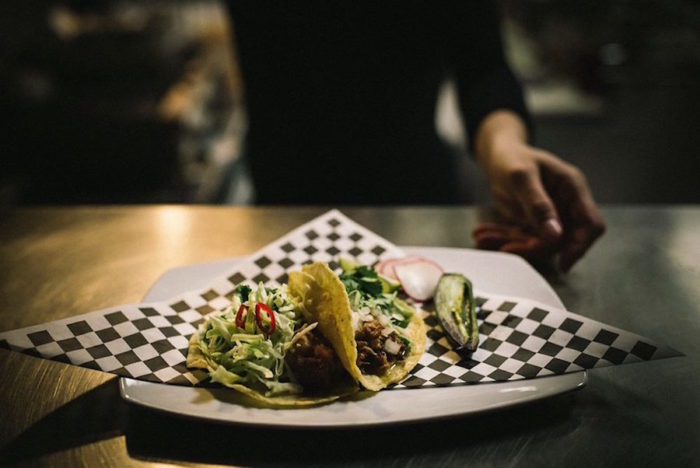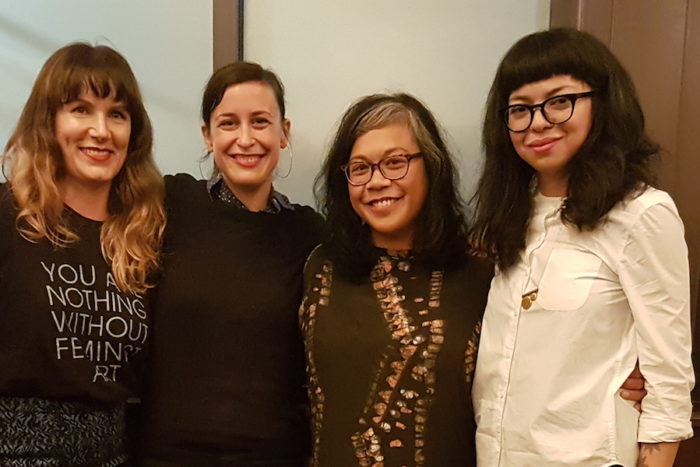
“I grew up in a very small town in Pennsylvania. It did not take long for me to figure out that my food, that my family ate every single night like normal people, was weird and smelly,” said Angela Garbes.
With those words, Garbes, a food writer, set the scene for “Other People’s Food”, a reading hosted by Garbes at Zoe Events featuring food writing by Monica Dimas, chef and founder of Tortas Condesa, Sunset Fried Chicken Sandwiches and Neon Taco; Anna Goren, writer and former Globalist columnist; poet, essayist and artist Rachel Kessler and Garbes.
The reading was part of Seattle‘s fourth LitCrawl, a collaboration with City Arts Festival, APRIL, and Litquake, a San Francisco-based organization advancing LitCrawls nationwide. Held last Thursday, Oct. 27, this year’s LitCrawl totaled more than 35 events at 15-plus venues in just four hours.
Garbes is known for her commentary on food, race and culture. During her time at The Stranger, she highlighted food establishments run by the lesser-reported immigrant communities and cultures of Seattle, ensuring they have a voice among the more mainstream pasta and pizza restaurants in town.
When approached to organize the event, she saw a chance to bring to light an issue close to her heart — that of the “other” — and to work with three women she admired.

Of Mexican heritage and hailing from Yakima, Dimas shared a story of how the strangeness of a new place with its unknown culture and food flavors affected her on the visceral level.
“It’s not the lack of friends that gnaws at me. It’s the food I can’t explore, the dishes I eat in a culture I can’t seem to wrap my head around,” said Dimas of the first time she left home for Charleston, SC to intern at McCrady’s, chef Sean Brock’s famed restaurant.
A chef running three restaurants in Seattle now, Dimas still holds the inherent link food has to her sense of comfort and culture by cooking for herself at home.
“I grew up with a family that had dinner together a lot, so the idea of cooking food that I could come back to and feel comforted (by), even though I’m running these restaurants, just felt like the right thing,” Dimas explained.
When Kessler wanted to connect with her newly discovered Jewish roots, she also found that connection and comfort in the kitchen. A child bred on microwave dinners, she taught herself how to cook Jewish meals and brought homemade latkes to share with the audience as she told a story of her grandmother, the family’s food matriarch.
For Kessler and the others, the desire to share food is a natural one. Since the beginning of time, breaking bread has a communal act of people sharing their stories and culture through the flavors laid on the table.
“We discovered each other in the kitchen. We learned the food that defined us,” said Goren, as she reminisced about her house-sharing days filled with unpredictable fridge contents and a mishmash of roommates, habits and cultures.
“The thing with roommates is that you learn the stories behind the foods, Goren said. “You learn about a new food from another culture, but you also learn why somebody makes that food.”
Perhaps the need to share our stories and our flavors is visceral, stemming deep down from our time in the womb. In her story of breastfeeding her newborn, Garbes tells of her daughter’s experience tasting her Filipino inheritance and those of others through the “aromas, flavors and textures” of her mother’s milk.
“I am moved by the idea that, without words, I am telling my daughter about myself, my life,” said Garbes.
Embedded within food are the identities, histories, and
Every woman spoke of the indelible imprint the food of “others” had on their lives and the importance of embracing the “other.”
“If we see certain kinds of food as ‘other,’ and to remain on the margins, we don’t value it. We devalue it from the cultural and financial standpoint,” said Garbes. “Wherever food comes from and whoever is making it, it all has inherent value. The same inherent value.”

